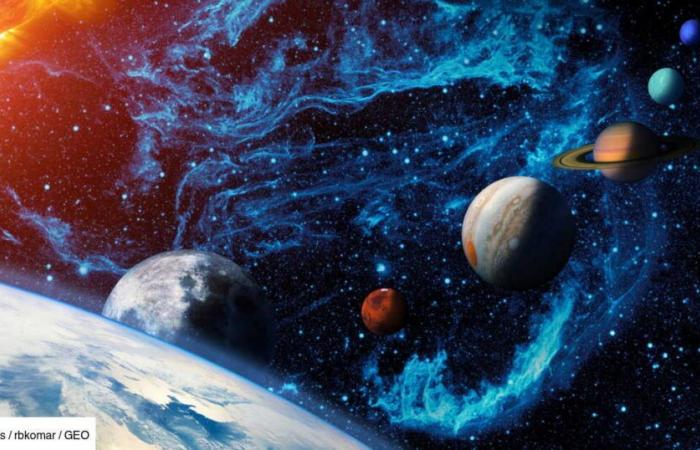A cosmic enigma is becoming clearer little by little. Uranus, the third largest planet in our solar system, has always been a mystery to scientists. It could be that our understanding of this “ice giant” is in fact incorrect, suggests a new study published Monday, November 11 in the journal Nature Astronomy, before being spotted by the Washington Post.
How is this done? A rare solar wind event may have occurred when the Voyager 2 probe passed near this planet in 1986. This event would have influenced the conclusions of experts at the time. “Our understanding of the Uranus system may be more limited than previously thought”detail the researchers who took part in this work.
Solar eclipse: 6 photos from NASA archives
Researchers surprised to find that Uranus seemed to lack plasma…
The so-called “recumbent planet”, located in the seventh position in the solar system, was visited only once by the Voyager 2 probe. Everything we know about it also comes from observations made since the Earth, mainly thanks to the Hubble Space Telescope and other astronomical instruments. In total, the probe traveled more than 2.9 billion kilometers in nine years to reach Uranus, recalls the American daily. During her encounter with the planet, she collected the majority of available data, including the planet’s rings and moons, in just six hours.
The results of this mission highlighted the fact that the magnetosphere of Uranus – this kind of protective magnetic field located around the planet – was unique. It appeared highly asymmetric to scientists, with radiation belts much more intense than they expected. However, Uranus appeared to lack plasma, in stark contrast to the magnetospheres of the solar system’s other giant planets, the latter of which are filled with energetic ionized particles.
On our blue planet, the magnetosphere plays a crucial role for life. Concretely, it protects the Earth from radiation and solar winds, recalls the Washington Post. If we go into detail, the Earth’s magnetosphere adopts the shape of a giant bubble, comparable to a comet, which protects us from dangerous cosmic radiation.
… In reality, Uranus was in an extremely rare situation at that time
The authors of this new study believe that Voyager 2 observed Uranus immediately after an intense solar wind event occurred. The latter would have compressed its magnetosphere, emptying it of plasma and causing “very energetic electronic radiation belts”. In other words, this refers to areas where electrons are particularly active and charged with energy, making the radiation more intense.
According to the researchers, if the probe had arrived a week earlier, it would have found a magnetosphere more typical of that of other giants in the solar system, such as Jupiter, Saturn and Neptune. “The probe saw Uranus in conditions that only occur 4% of the time”confirms Jamie Jasinski, of NASA’s Jet Propulsion Laboratory, lead author of the study, whose comments are relayed in a press release. These new elements suggest that the conditions observed during the flight were not representative of normal and that they biased the scientists’ conclusions.
A promising study for the five large moons of Uranus
This study is rich in lessons, because it is a guarantee of new hope regarding Miranda, Ariel, Umbriel, Titania and Oberon, the five great moons of Uranus. Ultimately, they could show signs of geological activity, which until now was thought unlikely. Researchers believed that the absence of plasma around Uranus meant that these natural satellites were inert and without internal activity. However, the results of the work published in Nature Astronomy suggest that this could be false.
Experts stressed the need for other missions in the future to explore Uranus in more depth. Recall that a survey conducted in 2022 by the National Academies of Sciences, Engineering, and Medicine recommended that NASA make Uranus a priority in the next decade. And this, by devoting a year to orbiting the planet and sending a probe into its atmosphere.






